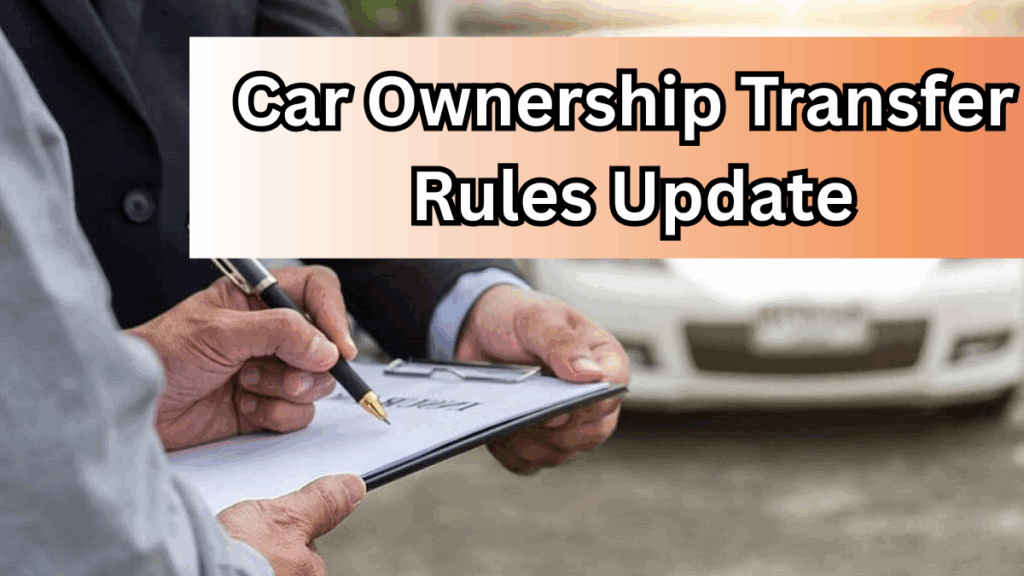Buying or selling a car is an exciting milestone, but the paperwork? Not so much. Fortunately, things are changing for the better. The changes in RTO rules for car ownership transfer in 2025 are designed to simplify the process and eliminate outdated hurdles, especially for those dealing with second hand car transfers.
Let’s explore how these new regulations will make car ownership transfers in India smoother, quicker, and more efficient—with a digital-first approach.

Table of Contents
What’s New in the 2025 Car Ownership Transfer Rules?
The Ministry of Road Transport and Highways (MoRTH) has revamped the process, aiming to digitize and simplify ownership transfers across India. These updates reflect a growing shift toward RTO online services, encouraging more transparency and ease for citizens.
Key Highlights:
-
Digital Documentation: No need for piles of physical documents anymore
-
E-signature Enabled: You can now authorize transfers with just an OTP and your Aadhaar card
-
No NOC Required Across States: Inter-state transfers just got a whole lot easier
-
30-Day Transfer Window: Buyers must complete the transfer within a month of purchase
Old vs New Car Ownership Transfer Process (2025 Update)
Here’s a quick comparison to show how the new rules stack up against the older process:
Feature |
Before 2025 |
After 2025 |
|---|---|---|
Document Submission |
Physical visit to RTO |
Fully digital through RTO online services |
Identity Verification |
Hard copy KYC documents |
Aadhaar-based eKYC and OTP |
Inter-State Transfer (NOC) |
Mandatory |
No longer needed |
Time Taken |
15–30 days |
Within 7–10 working days |
Transfer Deadline |
Flexible |
Must be done within 30 days post-sale |
Buyer/Seller Signatures |
Both had to visit the RTO |
Can now be done remotely using eSign |
Benefits for Second-Hand Car Buyers & Sellers
If you’re planning a second hand car transfer, the 2025 rules are a game-changer. Here’s why:
For Buyers:
-
Get ownership in your name faster
-
Avoid complications with insurance or pollution certificates
-
Track status via RTO online portals
For Sellers:
-
Reduced risk of being penalized for the buyer’s actions
-
Confirmation SMS once transfer is completed
-
No more delays caused by documentation errors
How to Transfer Car Ownership Online in 2025
Thanks to enhanced RTO online services, transferring ownership can be done in just a few steps:
Step-by-Step Guide:
-
Login to the Parivahan Portal (https://parivahan.gov.in)
-
Go to ‘Vehicle Related Services’ and select your state
-
Enter your vehicle’s registration number
-
Choose ‘Transfer of Ownership’
-
Upload digital copies of:
-
Form 29 & Form 30
-
Address proof
-
Insurance and PUC
-
-
Authenticate with Aadhaar eSign and OTP
-
Pay the nominal transfer fee online
-
Receive confirmation and digital RC within days
Avoid These Common Mistakes
Despite the simplicity, be cautious of these pitfalls:
-
Forgetting to complete the transfer within 30 days
-
Uploading unclear or incorrect documents
-
Not checking the vehicle for existing challans before buying
-
Relying solely on verbal agreements without proper paperwork
FAQs: New Car Ownership Transfer Rules 2025
1. Is Aadhaar mandatory for ownership transfer in 2025?
Yes, Aadhaar is now required for digital verification via OTP as part of the eSign process.
2. Can I complete a second hand car transfer fully online?
Absolutely. Thanks to upgraded RTO online services, both the buyer and seller can process the transfer remotely.
3. What happens if I don’t transfer the ownership within 30 days?
You may face penalties, and the car will still be legally tied to the previous owner—making them liable for any violations.
4. Do I still need a No Objection Certificate (NOC) for interstate transfers?
No, under the changes in RTO rules for car ownership transfer 2025, NOCs for inter-state transfers are no longer mandatory.
Final Thoughts
With the 2025 updates, India takes a giant leap forward in digitizing and streamlining vehicle transactions. Whether you’re buying or selling a used car, the emphasis on RTO online services, simplified eSign processes, and removal of outdated requirements like NOCs make things much easier.
Click here to learn more





